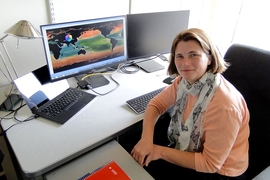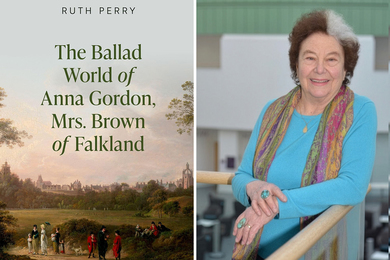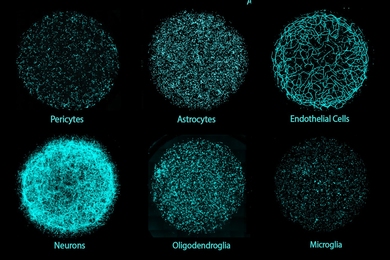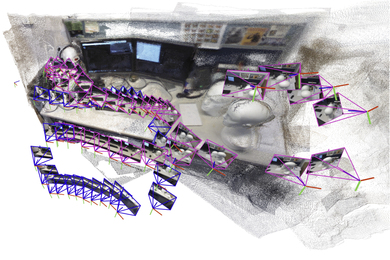Almost 25 percent of the world’s malnourished population lives in sub-Saharan Africa (SSA), where more than 300 million people depend on maize (corn) for much of their diet. The most widely-produced crop by harvested area in SSA, maize is also highly sensitive to drought. Because maize in this region is grown largely on rainfed rather than irrigated land, any future changes in precipitation patterns due to climate change could significantly impact crop yields. Assessing the likely magnitude and locations of such yield changes in the coming decades will be critical for decision makers seeking to help their nations and regions adapt to climate change and minimize threats to food security and to rural economies that are heavily dependent on agriculture.
Toward that end, a team of five researchers at the MIT Joint Program on the Science and Policy of Global Change and the Department of Earth, Atmospheric and Planetary Sciences (EAPS) has applied a broad range of multi- and individual climate model ensembles and crop models to project climate-related changes to maize yields in Africa throughout most of the 21st century. Accounting for uncertainty in climate model parameters — which is most pronounced in high-producing semiarid zones — the researchers project widespread yield losses in the Sahel region and Southern Africa, insignificant change in Central Africa, and sub-regional increases in East Africa and at the southern tip of the continent. The wide range of results highlights a need for risk management strategies that are robust and adaptive to uncertainty, such as the diversification of rural economies beyond the agricultural sector.
“In the wet regions you’d feel very secure in making large-scale, long-term agricultural decisions, knowing that the probability of error due to climate change is small,” says Joint Program Research Scientist Kenneth Strzepek, one of the study’s principal co-investigators (the other is Susan Solomon, the Lee and Geraldine Martin Professor of Environmental Studies in the EAPS Department). “In the arid regions, where the magnitude of uncertainty is much higher, you’d need to proceed with caution. That means developing strategies that hedge on which crops are cultivated, learning more about how the climate is changing before making any major investments, and considering alternatives to agriculture for economic development.”
The study was published in March in the journal AGU Earth’s Future and was funded by the Abdul Latif Jameel World Water and Food Security Lab and supported in-kind by the World Bank. It is right in Strzepek’s wheelhouse. For more than 40 years, he has cultivated expertise in environmental science and economics and applied it to promote sustainable development and poverty reduction, with an emphasis on optimizing the use of water resources in the developing world.
Engineering sustainable development and poverty reduction
Inspired by the creation of the Environmental Protection Agency in 1972, Strzepek started out pursuing a bachelor’s degree in environmental engineering at MIT, with the ultimate goal of working on U.S. environmental concerns. But during the summer of his sophomore year, after contracting a waterborne disease while participating in a water supply project in Mali, he felt called to shift his focus to the interplay of poverty, development, and public health. Propelled by this experience and the tenets of his Christian faith, he resolved to apply his engineering skill set to help alleviate poverty and promote sustainable economic development in resource-limited countries.
To enhance his effectiveness in carrying out this mission, he spent the next eight years at MIT earning BS and MS degrees in civil engineering and a PhD in water resources systems analysis. He also completed an MA in economics from the University of Colorado (where he also served as a professor of civil, environmental, and architectural engineering); and now, as a true lifelong learner, is midway through a PhD program in economics at the University of Hamburg in Germany. Anchored by this interdisciplinary academic background, he has spent his career working at the intersection of water, agriculture, environmental, and economic policy, modeling these systems to understand their linkages and implications for investment and policymaking in both developing and developed regions.
Today Strzepek splits his time three ways. First, as a research scientist at the MIT Joint Program he churns out peer-reviewed papers, such as the Earth’s Future study, that explore impacts of climate change on natural resources and economic development. As an educator, he serves as an adjunct professor of public policy at Harvard University’s John F. Kennedy School of Government focused on water and climate policy and as an adjunct faculty member at Denver Seminary in Colorado, where he teaches a course on development and poverty. Finally, as a consultant for the U.S. government, the World Bank, and the United Nations, he works on projects focused on sustainable development and poverty reduction.
For the U.S. Environmental Protection Agency, Strzepek has contributed to the 2015 Climate Change Impacts and Risk Analysis (CIRA) report, which estimated the environmental and economic benefits to the U.S. of reducing global greenhouse gas emissions. For the World Bank, he has helped develop a comprehensive framework agreement between all sovereign states in the Nile River basin to cooperatively manage their shared water resource. And as a nonresidential senior research fellow at the U.N. University World Institute for Development Economics Research (UNU-WIDER), he helps lead a research project Development under Climate Change (DUCC), which examines the impact of climate change on water resources, agriculture, and other infrastructure systems, and the consequences for economic development in Africa and other developing regions. He is also a contributor to a Joint Program/UNU-WIDER project called Africa Energy Futures, which is exploring the potential economic benefits of shifting the continent's energy system from fossil fuels to renewables.
“Ken Strzepek is never one to lose the forest for the trees,” says Channing Arndt, another senior research fellow at UNU-WIDER. “Whether engaging in politically sensitive analysis of the Nile River or assessing the development implications of climate change, he has an uncanny ability to get to the crux of the issue. His many contributions include more realistic views of the implications of climate change in Southern Africa.”
Raffaello Cervigni, a lead environmental economist with the World Bank’s Environment and Natural Resources Global Practice, also praises Strzepek's approach.
“Ken combines three traits that make him particularly effective in development work — world-class academic accomplishments, unbounded energy for Africans, and the right dose of humility,” says Cervigni, who has led several World Bank assignments in Africa in which Strzepek served as a lead consultant or technical advisor. “This combination means he is almost uniquely able to fully engage his developing country counterparts.”
Charting a better future for Africa under uncertainty
As he works to reduce poverty and expand sustainable economic development in Africa, Strzepek aims to ensure that nations in the region don’t either overreact or underreact to climate change. To assess the economic implications of such reactions, he considers the opportunity costs of policies designed to mitigate or adapt to climate change, i.e., what critical economic development projects, from new schools to housing, could have been funded if such policies were not implemented.
Of particular interest to Strzepek is determining the role of agricultural development in ensuring food security and as a potential engine of economic growth across the continent, all while the magnitude, pace, and impacts of temperature and precipitation change remain uncertain.
“Policymakers and investors are asking: How do we proceed with all of this uncertainty?” says Strzepek. “The Earth’s Future paper is one of the first attempts to try to see if there are any regions of Africa where the level of uncertainty is lower than we might expect. Using different climate models and accounting for variables that range from temperature to soil nutrient levels, is there a consistent signal that can direct decision-makers on how to proceed in the near future? We believe that our findings, which quantify the level of uncertainty by region, can help guide that process now.”
This article originally appeared in the Spring 2017 issue of Global Changes, a biannual publication of the MIT Joint Program on the Science and Policy of Global Change.










